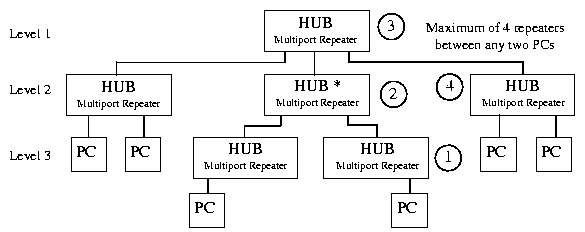| Introduction to Data Communications | ||
|---|---|---|
|
|
40b. Hub's OSI Operating Layer | Next |

Understanding that inside the Hub is only more repeaters, we can draw the conclusion that all connections attached to a Hub are on the same Segment and have the same Segment Number. It is considered one repeater from any port to any port even though it is indicated as a path of 2 repeaters.
The 5-4-3 Rule for Ethernet Hubs:
Cascaded Hub Network
Cascading Hubs means to connect the Hubs together through the RJ45 ports. One Master Hub (Level 1) is connected to many Level 2 (Slave) Hubs who are masters to Level 3 (slave) Hubs in a hierarchical tree or clustered star. The maximum number of stations in a Cascaded Hub Network is limited to 128.

| Introduction to Data Communications | ||
|---|---|---|
|
|
Table of Contents | Next |